Master Planning Unplugged, Volume 5: Scheduling Basics
You are here: >Master Planning Unplugged, Volume 5: Scheduling Basics
Hello and welcome to our continuing series of blogs devoted to the world of Master Planning in AX. Throughout the series, we’ve been ensuring we get the main setups and understanding of planning features explained. I also think it’s important to have a theme attached to these features to better explain why and how you use them. Just like in real life, we cannot predict everything that will happen, so this week’s theme is: “Plans always change.” Every company will have different scenarios and there are too many variables to be able to prevent a mistake or delayed order 100% of the time.
Airlines are great examples of this. You are always given a scheduled take-off time, but how often is that time accurate, and what’s percentage accuracy is actually considered successful? You need to make a choice of how to estimate times and how you measure things like scheduling capacity with all of the variables that are in play. How many flights are arriving and departing, how many gate workers are there, is there enough food and water supplied, does the airplane need to be fueled?
These are just some of the elements which ultimately factor in to how an airline would come up with the ETA of a flight departure and arrival. So with that in mind, we’re going to look at the manufacturing side of things and review Production Scheduling in AX to ensure you know how to be able to schedule production capacity based on your strategy and be able to react to that variability when the unexpected events inevitably occur. At a high level, we’ll walk through the following topics:
- Scheduling basics
- Operations v job
- Resource setup
- Scheduling direction
- Rescheduling
- Sorting
- Finite v infinite capacity
First off, let’s go back to the Coverage Groups. Under the “Other” tab is a field that controls what status a production order is given when a planned production order is firmed.
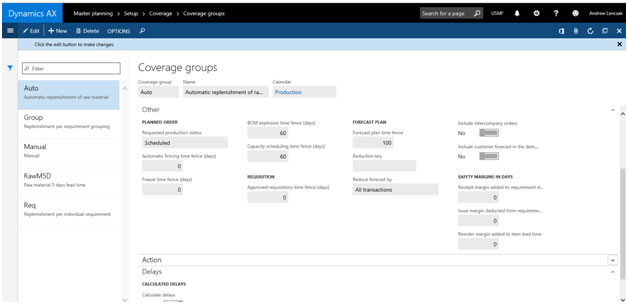
Although all values are displayed, this setting can only be set to “Scheduled,” “Released,” or “Started.” This gives variation to allow you to firm a production order into the schedule or release it right to the production floor from Master Planning. Next, we’ll review a setting in Production Control that ties in with this: scheduling direction. In the Periodic section of the Production Control module, you have a Scheduling menu. This is used to schedule or reschedule existing production orders and as the default for when a user is scheduling an individual production order while in the common Production orders form.
Scheduling for both Operations Scheduling and Jobs Scheduling. Operations scheduling is broader and plans capacity in hours, and also allows you to overbook a given day manually. So it’s more of a general estimate for scheduling. Jobs scheduling breaks up the operations of a production route into individual jobs, like Setup time, and Run time. Jobs scheduling is often used when more granular scheduling and labor reporting is needed. Companies who use Manufacturing execution or Time in Attendance in AX would be using Jobs scheduling most of the time. There are parameters to control the default scheduling method for your organization.
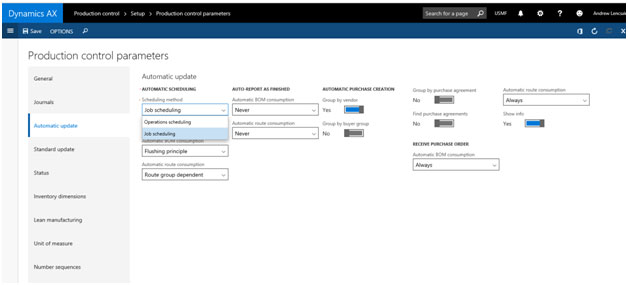
So depending on which option is right for your organization, you want to setup the Scheduling parameters, including Schedule direction and if you are using Finite capacity.
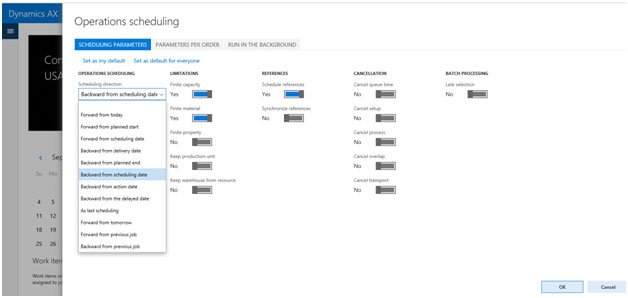
Scheduling direction is the control that the production order start and end dates are calculated on.
For example, Backwards from delivery date, takes the requirement date for the production order (which comes from a sales order or forecast date, i.e. when the item is “demanded”) and uses the lead time based on the route and the longest lead time of any components that may be required to give and estimated start and end date.
This method would be used if you wanted to schedule based on the latest date you could start production to have the item in inventory by the requirement date.
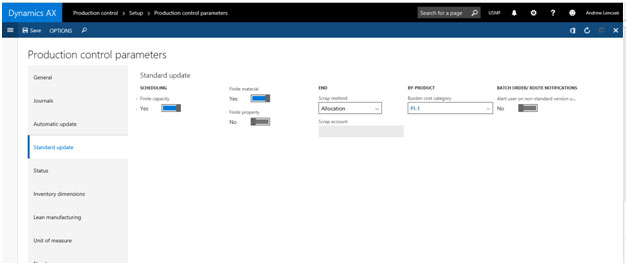
If your goal is to begin production as early as possible, you can use Forward from Scheduling date or Forward from today to see what the earliest start date of production is based on capacity and available inventory. So Scheduling direction is really just a basic rule for which date to base scheduling on.
Finite capacity takes the scheduling process a step further. We mentioned how operations and jobs scheduling book capacity against a resource. Start dates and end dates are calculated and operations assigned to resource groups. Finite capacity prevents any jobs from taking place on the same resource at the same time. And it does not allow you to overschedule a work day. So while Operations and Jobs scheduling themselves will book capacity based on available hours, you could still manually schedule or adjust a larger workload to that given day. With Finite capacity, you can only schedule against available resources.
Operations scheduling reserves capacity on the resource groups based on the operation times defined on the production route. The capacity of the resource groups is the sum of available capacity on all the resources in the resource groups. Job scheduling would book jobs against specific resources. Enabling Finite capacity is done via multiple setups in Master Planning, Production, and at the Resource level. This allows you to set the system so that Finite capacity is used in the short term to plan exact scheduling times, and infinite capacity is used in calendar days that are further out than the Capacity time fence.
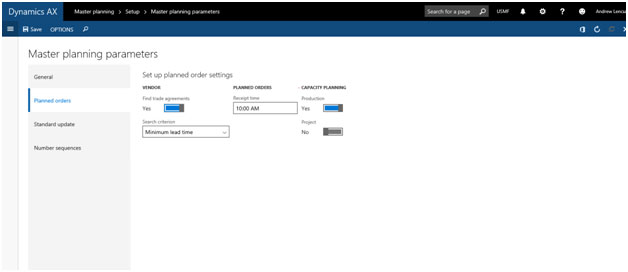
Based on Calendar working times:
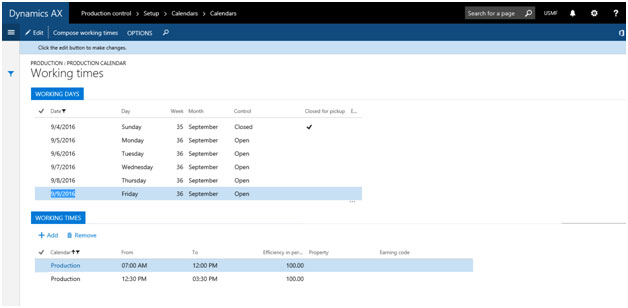
With those calendars and capacity turned on at the Resource group or level:
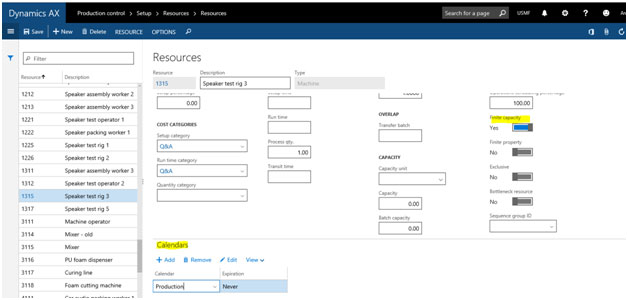
Along with time fences on the coverage groups or master plans to dictate how many days out capacity is scheduled for:
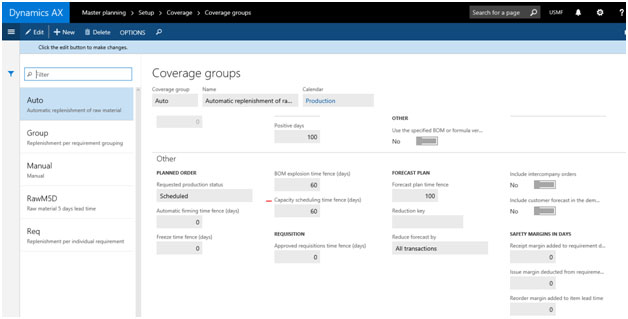
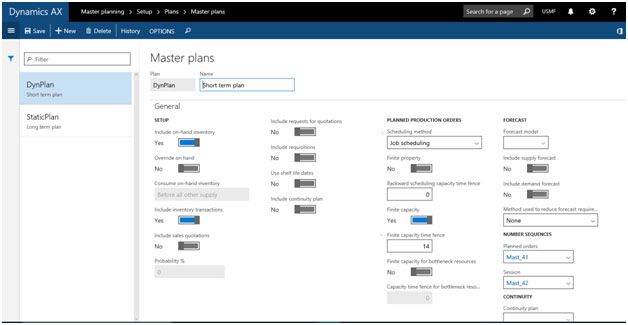
Since you only need to know exact capacity for the near future, Finite capacity is only needed over a certain amount of days and setting that time fence to a shorter period can speed up the planning calculations as well. If you are flexible enough where you only need to know the exact machine and to the minute times for the current production week, then your capacity time fence could be as little as 5 days, while your coverage time fence could still be much larger for visibility and explosion to drive component planning.
Another thing to consider is the actual uptime of machines and work centers on a daily basis. Not everything can run at full capacity all of the time. Resource groups have Efficiency percentages to manage this. This allows you to manage the actual time in a day that is available to book for a given resource. So if the calendar is 8 hours/day, but the machine only runs at 75% capacity (i.e. 6 hours/day) then only 6 hours would be available to book against the resource.
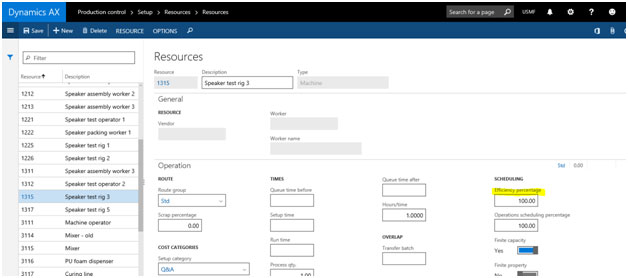
Now, back to scheduling. Dates are ultimately going to change. You will not make everything at the exact date and time you originally scheduled 100% of the time. So rescheduling comes in handy. You can use the Operations and Jobs scheduling functions under Production Control’s Periodic section to reschedule existing production orders based on the most current information.
That should then help Master Planning by having more accurate data to base its analysis on. I have seen time and time again companies who leave Production order start dates in the past because they think it’s required to keep the “urgent” demand on components that are past due. The real problem is the management of their dates and having AX setup so they are seeing new demand when they need to.
A very important feature to note when using Scheduling is the Sorting parameter:
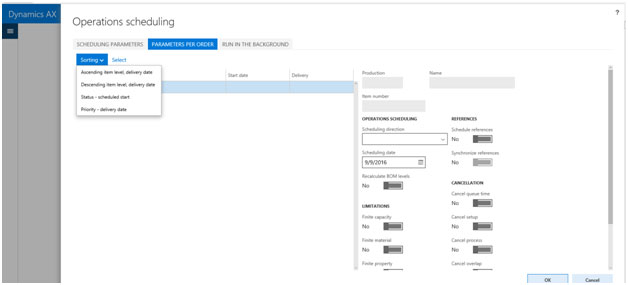
Sorting allows you to define the sequence of which orders will be scheduled first. This way you can reschedule based on priority of delivery date or just reschedule alphanumerically.
All of this will have an effect on other topics that have been explored throughout this blog series. For example, Actions and Calculated delays can be triggered based on the way a production order was scheduled. If the production was scheduled to be completed as early as possible, a Futures message may be calculated to suggest postponing the start and completion of the production order if the requirement date is later than the end date of the scheduled production.
This is why coupling your production scheduling strategy to the settings of your Master Plan and Coverage groups is so important. If you assign these blindly, you just will not get the outcome you are looking for.
When you get it right, scheduling and daily order maintenance in Dynamics AX becomes so much more valuable and efficient. You can get reports on the capacity load per resource or resource group and see what it will be in the coming schedule:
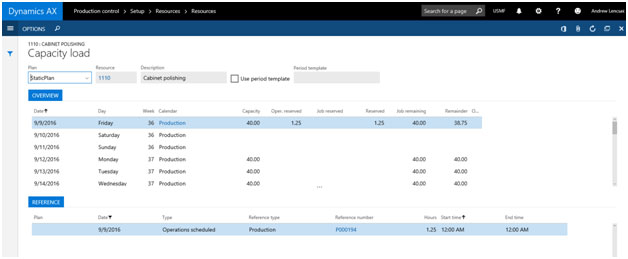
Calendar deviations can be used to adjust capacity on certain days based on personnel or other events. For example, a machine may only be running at 60% one day because of downtime for maintenance.
The new Dynamics AX has added to all of this by bringing more visibility to the post planning cycle as well. Once production orders are scheduled, the next step is releasing them to the production floor so actual manufacturing or assembly can begin. A new Workspace for Production floor management has been added to give immediate insight into which production orders can be released based on material availability.
There is no longer a need to review on-hands screens line by line or do a Max. report as finished function by navigating to the released product. Now all of that information is seen right away with links to explosion and critical on-hand inventory information, as well as the ability to mass release all production orders that can be.
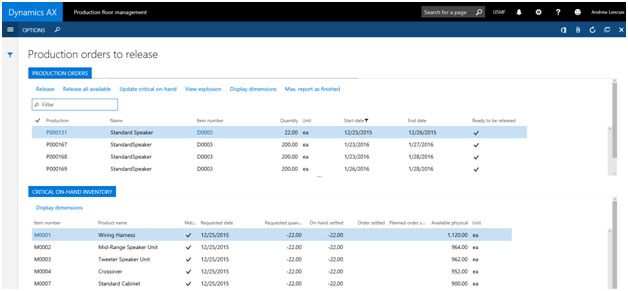
Now you can see how much goes into the dates AX calculates when using Master Planning and production scheduling. The dates are not arbitrary and you need to manage the settings that the calculations are based on to meet your planning strategy.
- About Us
- Partners
- Careers
- Contact us
- eBECS and the Microsoft Core Data Platform
- Microsoft Dynamics NAV in Property Management
- Microsoft Dynamics Nav Manufacturing Solutions
- Microsoft Dynamics NAV Cloud pricing
- Drive your Azure Momentum with SQL Managed Instance
- Compare Microsoft Dynamics AX VS NAV
- Microsoft Azure Data Centre Migration Guide
- Microsoft Dynamics 365 Business Central or 365 for Finance & Operations?
- Introduction to Microsoft Dynamics 365 for Finance and Operations
- Microsoft Dynamics 365 Business Central or 365 for Finance & Operations? Thank You
- Microsoft Dynamics 365 Business Central or Dynamics 365 Finance
- Compare Microsoft ERP Solutions
- Compare Microsoft ERP Solutions, Dynamics NAV vs Dynamics 365 Business Central
- Microsoft Dynamics 365 Business Central Price
- Compare Microsoft ERP
Categories
- AI (3)
- Azure (2)
- Business Insights (1)
- Canvas Apps (1)
- Common Data Service (2)
- Crisis Communication (1)
- CRM (3)
- Customer Data Platform (1)
- Customer Insights (1)
- Data Analytics/BI (29)
- Data Management (1)
- Data Warehouse (1)
- Dynamics 365 (33)
- Dynamics 365 Finance (1)
- Dynamics 365 Sales Insights (1)
- Dynamics 365 Supply Chain Management (1)
- Dynamics AX (50)
- Dynamics CRM (22)
- Dynamics Field Service (10)
- Dynamics NAV (10)
- Dynamics Project Service Automation (PSA) (15)
- eBECS (4)
- eBECS Marketing (1)
- eBECS Policies (1)
- ERP (2)
- Internet of Things (IoT) (15)
- Master Planning AX (4)
- Microsoft 365 (1)
- Microsoft Lifecycle Services (4)
- Power Apps (4)
- Power Automate (3)
- Power BI (1)
- Power Platform (6)
- Power VIrtual Agent (1)
- PowerApps (2)
- Project Service Automation (2)
- Quality Management (1)
- Sales (1)
- Surface Hub (3)
- Top Tips (1)
News
Upcoming Events - Register Now
Join our list
eBECS will invite you to webinars, events and keep you up to date with relevant news. You can unsubscribe at any time.









